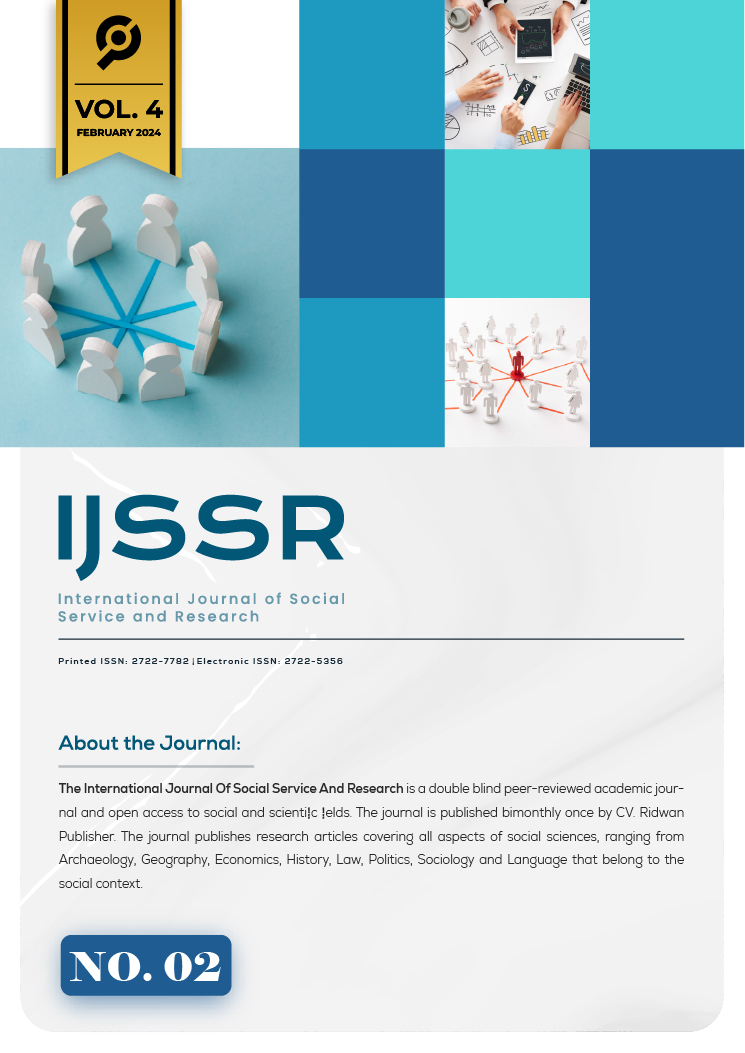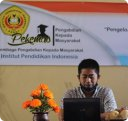The Influence of Workload, Work Motivation, and Physical Work Environment on Employee Performance
DOI:
https://doi.org/10.46799/ijssr.v4i02.697Keywords:
Workload, Work Motivation, Physical Work Environment, Employee PerformanceAbstract
This study investigates the impact of workload, work motivation, and the physical work environment on employee performance within the Finance and Equipment Section of the Secretariat of the Directorate General of Livestock and Animal Health, Ministry of Agriculture. The population comprises 150 employees within this section. Utilizing the Slovin formula, a sample of 110 employees was selected. Data analysis was conducted using SPSS version 23, employing multiple linear regression. The results revealed significant findings supporting the three hypotheses proposed. However, the abstract does not provide specific details about the magnitude and direction of these effects. The study suggests that the Finance and Equipment Division employees can enhance their performance by addressing factors such as workload, work motivation, and the physical work environment. Practical implications and recommendations for implementation are not explicitly mentioned in the current abstract. In summary, while the abstract effectively outlines the study's objectives and methodology, it could benefit from greater specificity, conciseness, and clarity in presenting the essential findings and their practical implications.
References
A. Anwar Prabu Mangkunegara. (2011). Manajemen Sumber Daya Manusia. PT. Remaja Rosdakarya.
A.F.Stoner James, D. (1996). manajemen (Indonesia). PT. Prenhallindo.
Abdul Rachman, S., & Hardi, U. (2018). Pengaruh Disiplin Kerja, Motivasi Kerja, Etos Kerja Dan Lingkungan Kerja Terhadap Produktivitas Kerja Karyawan Bagian Produksi Di PT Inko Java Semarang. Among Makarti, 11(21), 28–50. Afandi, P. (2016). Concept & Indicator Human Resources Management for Management Researchle (Deepublish).
As’ad. (2001). Seri Ilmu Sumber Daya Manusia Psikologi Industri. Liberty.
Billy Rubianto Irawan. (2016). Dampak Inovasi Produk Terhadap Kinerja Pemasaran (Agora Vol).
Fajarullaili, N. A. (2018). Pengaruh Beban Kerja Dan Lingkungan Kerja Terhadap Loyalitas Karyawan Pada Unit Pelayanan Dinas Kesehatan Provinsi Jawa Timur. Fakultas Ekonomi Dan Bisnis Islam Universitas Islam Negeri Sunan Ampel Surabaya.
Garniwa. (2007). Perilaku Organisasional. Graha Ilmu.
Ghozali, I. (2012). Aplikasi Analisis Multivariate dengan Program IBM SPSS. Universitas Diponegoro.
Griffin. (2003). Manajemen. Erlangga.
Handoko, T. H. (2001). Manajemen Personalia dan Sumber Daya Manusia. BPFE Yogyakarta.
Harpitasari, D. R. (2010). Manajemen SDM. Rineka cipta.
Hasibuan, M. S.. (2003). Manajemen Sumber Daya Manusia. Bumi Aksara. Herman Sofyandi. (2018). Manajemen Sumber Daya Manusia. Graha Ilmu.
Hs, S., & Risa, M. (2020). Pengaruh Kepemimpinan, Kompetensi, Beban Kerja, dan Lingkungan Kerja, Terhadap Kinerja Pegawai Lembaga Layanan Pendidikan Tinggi (LLDIKTI) Wilayah III Jakarta. Jurnal Riset Manajemen Dan Bisnis (JRMB), 5(3), 399–408.
Khairunnisa, V. (2018). Pengaruh Efikasi Diri dan Kompetensi Kewirausahaan Terhadap Intensi Berwirausaha (Studi pada Mahasiswa Aktif Universitas Pasundan Bandung). 15–52.
Kiolol, C. C. (2018). Pengaruh Beban Kerja Terhadap Produktivitas Kerja Karyawan Pada Siloam Hospital Manado. Jurnal Manajemen.
Maslikha, H., Puspitaningtyas, Z., & Prakoso. (2016). Pengaruh Inflasi dan BI Rate terhadap IHSG. Vol. IV Edisi, 1, 62–67.
Mathis, R. L. & J. H. J. (2006). Human Resource Management (salemba em). Meilinda, T. (2017). Pengertian Beban Kerja.
Minarni, E. (2017). Pengaruh Profesionalisme dan Motivasi Terhadap Produktivitas Kerja Karyawan Pada Kantor Badan Pusat Statistik Kota Medan. Ekonomi, 11–12, 18–19.
Munandar, S. A. (2011). psikologi industri dan organisasi. Universitas Indonesia. Nitisemito, A. S. (1992). Manajemen dan Sumber Daya Manusia. BPFE UGM. Pujiati. (2018). Pengaruh Kompetensi, Beban Kerja Dan Kompensasi Terhadap Kinerja Perawat Rumah Sakit Umum (Rsu) Avisena Cimahi. 28–29.
Robbins, Stephen, P. (2003). Prinsip-Prinsip Perilaku Organisasi. Erlangga. Siagian, S. P. (2003). Manajemen Sumber Daya Manusia edisi satu (cetakan ke). Bumi Aksara.
Sugiyono. (2016). Metode Penelitian Kuantitatif, Kualitatif dan R&D. PT. Alfabet.
Syamsu, N. N., Soelton, M., Nanda, A., Putra, R. L., & Pebriani, P. (2019). Bagaimanakah Konflik Peran Dan Beban Kerja Mempengaruhi Kinerja Karyawan Dengan Burnout Sebagai Variabel Intervening. Jurnal Ilmiah Manajemen Dan Bisnis, 5(1), 1. https://doi.org/10.22441/jimb.v5i1.5621
Tarwaka. (2014). Manajemen dan Implementasi K3 di Tempat Kerja. Harapan Press.
Umar, H. (2013). Metode Penelitian untuk Skripsi dan Tesis. Rajawali.
V.Hubeis, M.. dan A. (2007). Manajemen Mutu sumber daya Manusia. GHALIA INDONESIA.
Published
Issue
Section
License
Copyright (c) 2024 Indah Fitriyani, Herry Krisnandi, Kumba Digdowiseiso, Siti Aisyah Saat

This work is licensed under a Creative Commons Attribution-ShareAlike 4.0 International License.
Authors who publish with this journal agree to the following terms:
- Authors retain copyright and grant the journal right of first publication with the work simultaneously licensed under a Creative Commons Attribution-ShareAlike 4.0 International. that allows others to share the work with an acknowledgement of the work's authorship and initial publication in this journal.
- Authors are able to enter into separate, additional contractual arrangements for the non-exclusive distribution of the journal's published version of the work (e.g., post it to an institutional repository or publish it in a book), with an acknowledgement of its initial publication in this journal.
- Authors are permitted and encouraged to post their work online (e.g., in institutional repositories or on their website) prior to and during the submission process, as it can lead to productive exchanges, as well as earlier and greater citation of published work.













